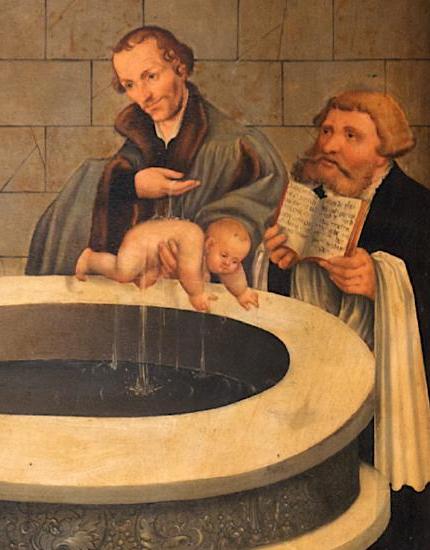Martin Luther retained much of the late medieval Latin baptismal rite, when he wrote a German language version, known as the Tauffbuchlin, or Little Book of Baptism (1523).

Luther streamlined his German language baptismal rite in the 1526 revision, removing salt, chrism and candles. Chrism is a consecrated mixture of oil and balsam, used for anointing in church sacraments such as baptism.
The questions: “What do you seek?” and “What is your name?”, are followed by this Gospel reading for baptisms since the seventh century.
And they brought young children to him, that he should touch them: and his disciples rebuked those that brought them.
But when Jesus saw it, he was much displeased, and said unto them, Suffer the little children to come unto me, and forbid them not: for of such is the kingdom of God.
Verily I say unto you, Whosoever shall not receive the kingdom of God as a little child, he shall not enter therein.
And he took them up in his arms, put his hands upon them, and blessed them.
source: Mark 10:13-16 King James Version (KJV)
Luther’s revision became extremely popular in his day and has influenced baptismal rites down to our own day.
The Baptism rite produced by Archbishop Thomas Cranmer for the Church of England (1549) shows the direct influence of the Tauffbuchlin, especially in its inclusion of the famous Flood Prayer (the Sintflutgebet).